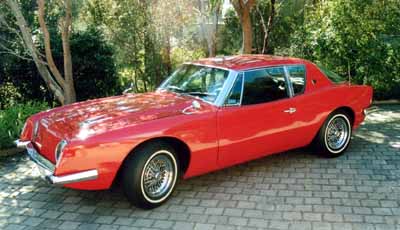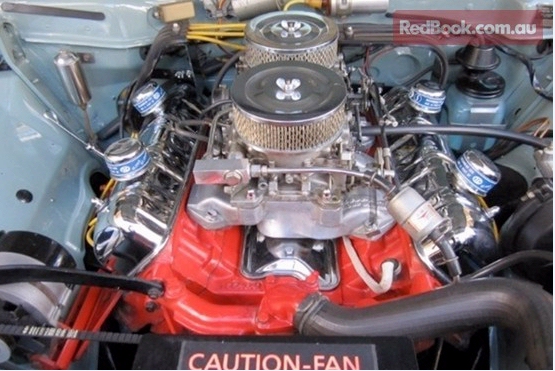
Bob's Studebaker Resource Website
1964 R4 Commander
Kevin Bell, New South Wales, AU - Apr 2012

|
|
1964 Studebaker Commander Studebaker is just one of a long list of car brands that have disappeared during the 120 years-plus history of the motorcar. Incorporated in 1868 as a company making wagons that were put to various uses on farms and in the battlefield, then as a carmaker building electric-powered vehicles in 1902, Studebaker had its final hurrah in 1966 when the last car rolled of the line in Ontario, Canada, in 1966. Yet the brand – not alone among other defunct car companies – is widely remembered and respected today, usually by the generations that have had first-hand experience. And one car that carried the badge with honour was the 1964 Bert Needham Studebaker Commander that raced to noteworthy success on Australian circuits in the 1960s. The Commander was a development of the Studebaker Lark, a rounded American compact car that first appeared in 1959. It morphed in 1964 to a more squared off design, badged more authoritatively as Challenger in entry level form, and as Commander in the upmarket versions. There was also a Wagonaire version with an opening rear roof that allowed unheard-of ute-style loading versatility. Although stateside models embraced not just Challenger and Commander, but also Daytona and Cruiser sedans (the latter was not made as a wagon), Australian models continued to be referred to as Studebaker Larks, right through to their discontinuation in 1966. The stubby Studebaker was also familiar locally as a police pursuit car, an application helped along (as it was in circuit racing) by the standard 4.2-litre V8 engine and, in 1966, by a larger 4.6-litre version. The combination of relatively compact dimensions and a lusty V8 proved effective on Australian racetracks in the early 1960s, and Studebaker Larks were prominent in the starting grid in early endurance races. Among the first competition outings was the Armstrong 500 held at the Phillip Island circuit in Victoria, where a Lark driven by David McKay and Brian Foley won its class in the second staging of the event in 1961. Undoubtedly one of the most well-known Studebakers in Australia was the 1964 two-door coupe Commander campaigned by racing driver, Bert Needham. It was a consistent presence in endurance racing, with a swag of fine performances in the successor to the Armstrong 500, the annual race in Bathurst NSW that has become the major touring car event on the motorsport calendar. The Bert Needham Studebaker scored a Class D win in the 1964 race, crossing the line in outright fourth place behind three Ford Cortina GTs. After dominating early in the race, both Needham and another Studebaker driven by Fred Sutherland succumbed to braking deficiencies that allowed the less powerful Cortinas to take the lead. That performance was followed by other memorable finishes in the Bathurst race, against the growing might of the local V8 Bathurst specials. If you followed this fabulous two-door Studebaker in the 1960s, you might like to know the car is still alive and very well – and up for sake. Now living in Gooseberry Hill in Western Australia, the famous Studebaker is in such good shape it has won, according to the owner, "multiple” concourse awards. Featuring a Granatelli high-performance V8 with a 12:1 compression ratio and twin four-barrel carburettors, the car has a Super Lark high-performance package with, among other things, a manual four-speed gearbox, race suspension with reworked springs and shock absorbers, and a bigger fuel tank. It is apparently pretty quick: The owner says it has been timed at 13.93 seconds over the standing 400 metres at the Castlereagh drag strip in NSW. The car described as “the most famous racing Studebaker in the country” is priced at $55,000 – and, significantly, comes with a roadworthy certificate.
|

R4 R-2328




